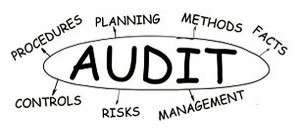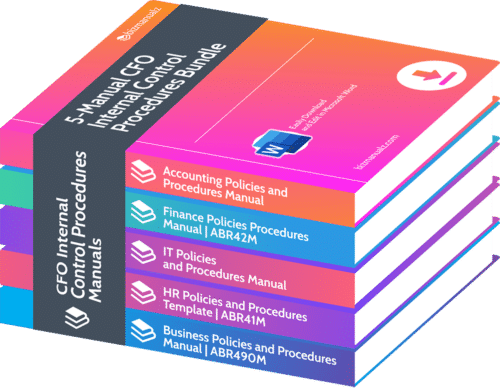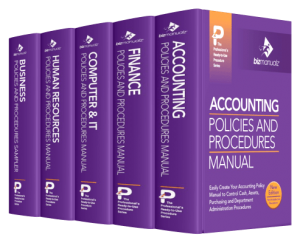How a Financial Control System Gets Results

With the implementation of the Sarbanes-Oxley Act (SOX), finance and accounting departments have scrambled to put in place internal control systems as required by SOX section 404. Compliance with SOX and SEC regulations are certainly good reasons for companies to create a financial control system.
Financial Control Systems Get Results
Small and medium size business (SMB) owners might wonder how this applies to them or helps improve their business metrics. Perhaps you have a few investors or creditors and need to produce financial statements, but you don’t have to worry about complying with SEC or SOX regulations. Or do you?
What is the Point of an Financial Control System?
It is interesting to note, however, that in many cases the internal control system at public companies consists of a volume of instruction-like procedures that document activities. If a company is taking the time and effort to develop a procedure based, financial control system, then it seems worth the small amount of additional of effort it would take to:
- Understand major financial processes
- Establish key finance policies and goals (including performance goals as well as producing accurate financial statements)
- Determine which processes provide a level of risk or materiality in reaching financial goals
- Prioritize development of the control system according to materiality, risk, and other important goals
- Incorporate best practices and a continual improvement philosophy to build effective processes and nurture a culture of improvement
Is there a better indicator of an effective control system than clear goals and key performance metrics that are consistently measured and regularly improving?
So the question that applies to companies of all sizes, shapes, and types: Are you taking advantage of the financial control system to improve process results and drive your financial performance upward?

Improving Processes in the Office Space
Discussions of improving processes are too commonly relegated to the production floor. Is it any less important for your office processes to function effectively and efficiently? How well does you company manage financial aspects like working capital, debt and investments, and leasing? These are just as vital to success as how efficiently production operates. Yet, few companies attempt to understand and improve finance processes to the same degree.
Focus on Finance
In fact, a lack of focus on finance is common, especially among privately owned SMBs (small to medium businesses). Research shows that a majority of SMBs do not create capital plans, do not actively manage working capital, nor do they conduct analysis of financial statements.
It can even seem a bit humorous to consider the controls and checks businesses put in place, for example, to prevent minor pilferage from the cash drawer, while having no processes in place to, say, conduct basic ratio analysis of financial statements in order to understand the meaning behind the numbers.
Making Money with Cash
Do you know if you are making money on the cash you borrow? Or how about the assets you deploy like accounts receivable, inventory, or cash. What about the asset acquisitions you make? These are hard questions to ask for some but when it comes to business finance, these are the questions you should be asking – before you raise debt or equity capital.
What really represents the biggest threat to the success of your business; Mary Lou borrowing a fin from the till when she is caught short at lunchtime on Friday, or having no thought-out and consistent methods for managing high level financial processes that can represent millions in losses when they go bad? The answer should be obvious.
A Financial Control System that Focuses on Improvement and Success
Of course, we are not saying that businesses should ignore prudent controls over their cash drawer. The point is that focusing on small components while not knowing how much cash is tied up in receivables does not represent a control system that recognizes priorities and risk. Focusing solely on the rote and mundane does little to improve your overall cash flow or financial performance.
Financial control systems shouldn’t just be about compliance, they should be about continually improving key aspects of the financial operation such as:
- Regularly reviewing and improving the overall capital structure.
- Using a capital plan to minimize the cost of capital while strengthening the Debt/Equity position.
- Managing working capital so excessive inventories and receivables do not sap financial resources.
- Ensuring proper calculations and scenarios are explored while making debt/investment or leasing decisions.
- Maximizing returns while minimizing costs for cash and merchant accounts.
Internal Control Systems
A control system of well-defined processes is not only about control or compliance, it is also about consistently striving to do a little better. Internal control systems that are designed only to achieve compliance are doing the bare minimum, and they represent a missed opportunity to gain improvement and a competitive edge.
And that should be enough reason for any size and type of company to think about using a continual improving process approach to creating a financial internal control system. Sox is nice, but continual improvement is better for everyone.
Bizmanualz Procedure Templates Incorporate the Continually Improving Process Philosophy
There is no reason to start building financial internal controls from scratch. All of Bizmanualz policies, procedures & forms products are thoroughly researched to implement best practices while employing a continual improving process approach, and they are reviewed by subject matter experts who work in the field. Plus, every manual can be downloaded with all the procedures and forms in Microsoft Word format, so you can easily customize them to meet your needs.

















Leave a Reply